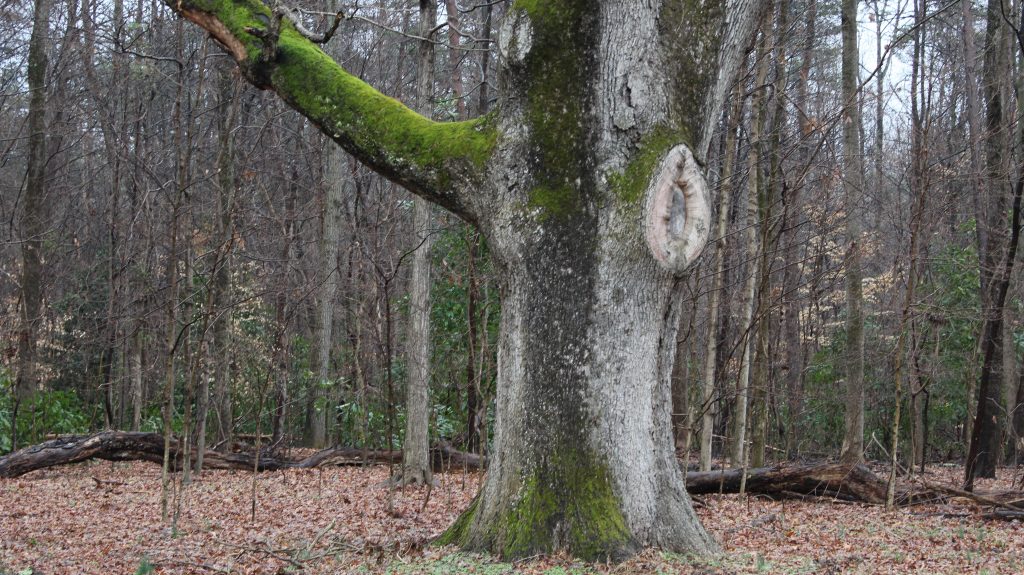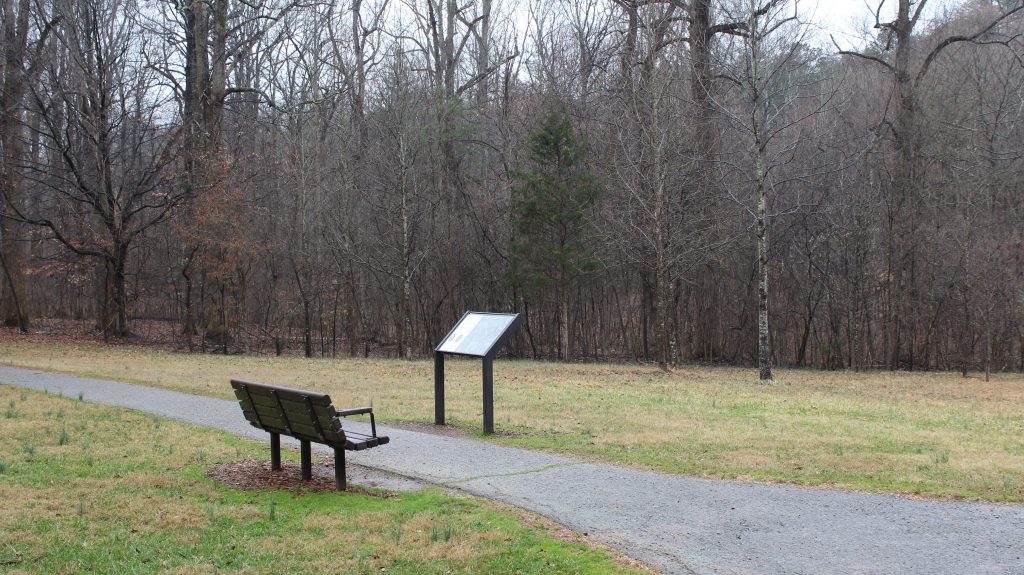Restoration of Habitat

Since the distribution of the Guilford Battleground lands to the federal government in the mid-20th century, park administrators and park ranger strove to further restore the parkland’s natural spaces and to maintain and protect the monuments erected by the Guilford Battleground Company. As a means of documenting the change of the battlefield, the park publishes a report regarding the authors of the park’s most recent Cultural Landscape report from 2003, break-down the park into three distinctive zones: the Greene Monument, the meadow known as “Schenck’s field,” and the third being the seemingly indistinctive (or at least within the report) surrounding woodlands.
Deliberate Feeling
In addition to the minimal habitat restoration that has taken place over the last five decades, park administrators have introduced other man-made intrusions to the parklands, including additional paved road, park ranger buildings and park offices, lavatories and paved trails along with other signs and historical markers. The most notable maintenance and planned expansions of maintenance within the Cultural Landscape report surrounds the incorporation of additional parcels of land that were donated to the Military park recently by various benefactors. The lands need to be assessed and properly managed.
One term that recurs throughout the section regarding the donated parcels is “landscape integrity,” which refers to the historical integrity of the land. In other words assessing a parcel’s landscape integrity draws into question the human interferences in the landscape since 1781, when the Battle of Guilford Courthouse took place. Additionally, the term is broken up into different subsections: the setting, the feeling, and the association. I find that the most important aspect defined, in this context at least is what the authors of the report define the feeling. According to the report a historical place should convey “ a sense of the aesthetic or historic character that typified its landscape during the selected period of significance.” The authors also note that “ at Guilford, the park’s landscape generally evokes the essence of the heavily forested, battle-era setting.”

Construction, Development, Progress
The borders of the historic military parklands are clearly visible from the paved road that roughly travels the perimeter of the park. Modern suburb neighborhoods border the historical parklands, comfy ranch-style houses with backyard playgrounds stand in contrast to the solemn, wooded battlefield behind. A clear border exists between modern residences and historical wilderness though issues regarding where the park ends and the modern world begins didn’t exist around the time of the American Revolution. A specific feeling of the authentic, historical wilderness was the de facto state of the land under European settlement in the 1780s. The need for influential men of the 19th century to commemorate the past, clothing it in impressive bronze statues. Eventually, this formed into the stewards of the 21st century, concerned with the evocation of historical authenticity within the landscape of the battlefield, such a slow but welcomed change in the evolution of land management at the Guilford Battleground parklands.